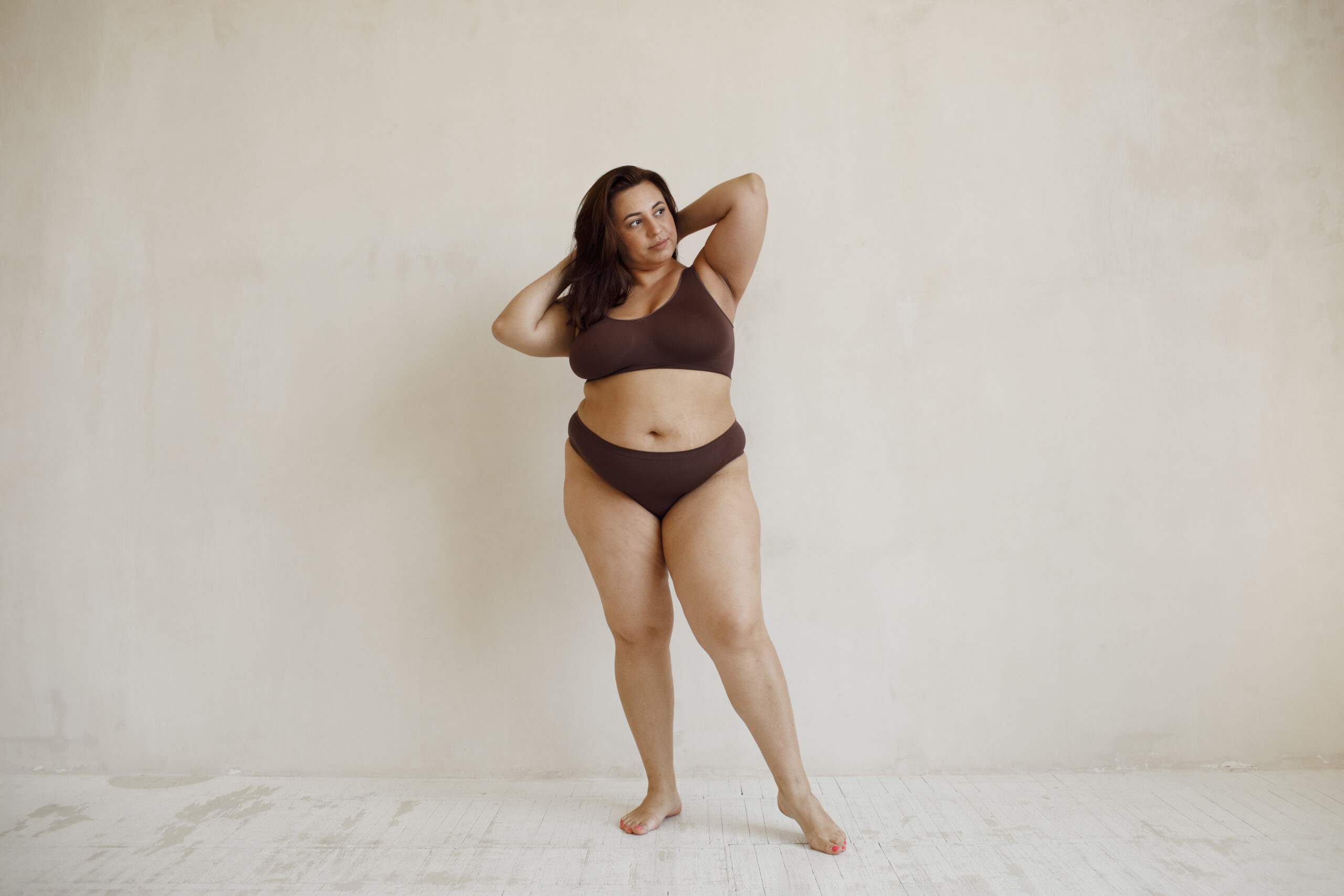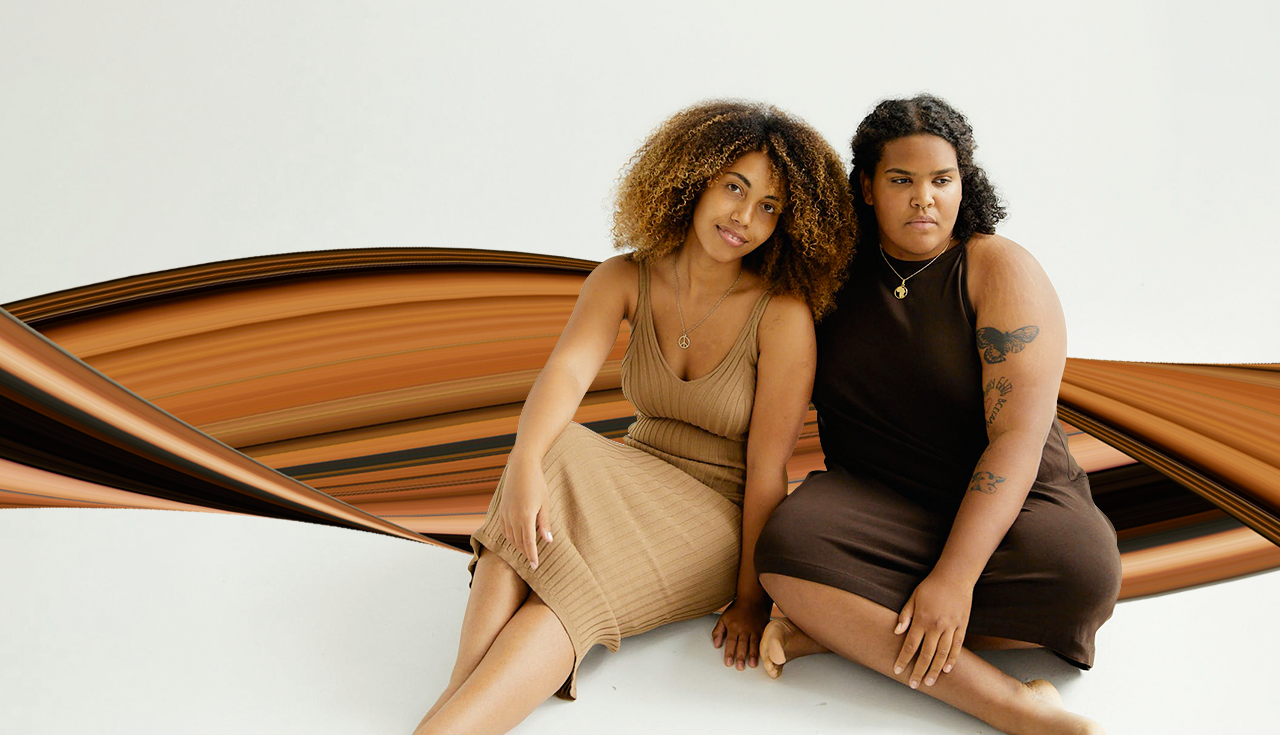Vá direto ao assunto
Learn about the growing plus-size fashion market, the importance of inclusivity, and essential tips for catering to diverse body types.
The fashion world has never been the most inclusive space. The industry has long held a very obvious ideal body type, as defined by the models walking down runways and prominently displayed on magazine covers and billboards.
For a long time, brands and designers were not making clothes for anyone whose body shape or size did not meet those rigid beauty standards.
Many shoppers didn’t feel represented by the fashion industry and more often than not, were limited to unflattering designs and fits. However, in recent years the tide has been turning.
The industry has made significant advances towards inclusivity, with increasing representation and acknowledgement of diverse body types.
And as more and more brands, designers, and online fashion retailers seek to cater to plus-size consumers, the market has begun to thrive.
In this article, we’ll give you a brief overview of the plus-size fashion market and everything you need to know about it as it applies to fashion e-commerce.
What is plus-size clothing?
The question of what constitutes plus-size clothing is difficult to answer. There’s no universally agreed upon definition or measurement for plus-size clothing. And changing standards and sizing in the fashion industry have further added to the confusion.
Over the years, sizes have inflated. What was considered plus-size clothing 100 years ago, would not be considered as such by today’s standards. This is largely due to the practice of vanity sizing, which refers to labeling garments with a size that’s smaller than the actual cut of a garment.
With all that being said, and despite the lack of an exact definition of plus size, the term generally refers to clothing larger than a US 12. The reason for this is because a women’s size 12 tends to be the largest size offered by many retailers.
The market potential of plus-size fashion
As demand for stylish and well-fitting clothing increases, plus-size clothing is far from being a niche market. Instead, it’s a large segment of the apparel market and is expected to grow substantially in the near future.
Globally, the value of the plus-size market was estimated to be US$288 billion in 2023, and projected to grow to US$ 501.35 billion by 2033.
Considering that the plus-size market has long been underserved, there is still lots of room for innovation by brands and retailers looking to enter the space.
Body Representation
As we mentioned earlier, plus-size bodies are all too often neglected by the fashion industry. If you want to tap into the plus size market, the importance of promoting body positivity and representation cannot be overlooked.
Even today, with increased awareness and emphasis being placed on addressing diverse body types, the majority of bodies seen in fashion continue to fit certain standards. In 2023, data was collected on clothing size representation in Autumn/Fall fashion runway shows in New York, London, Milan, and Paris. Of the 9,137 looks that were analyzed, the majority were in the 0-4 size range.
With this huge lack of representation in the fashion industry, consumers are tired of seeing fashion shows and campaigns filled with models that fit a particular mold. Instead, they want to see models that look like them. That’s why inclusivity in advertising and marketing is essential.
If consumers can relate to your brand, they’re much more likely to shop from you. So make sure that your online store and promotional material feature a diverse range of models that reflect your customer base.

Plus-size design
Additional considerations must be taken for plus-size clothing. Even if your online clothing store doesn’t manufacture its own clothing, this section can still be relevant in helping you decide which brands and garments to stock.
Fit and comfort
Well-designed, plus-size clothing isn’t simply a bigger version of smaller sizes. Designs need to be adjusted. And fit and comfort are non-negotiable. If garments aren’t tailored to accommodate the proportions of plus-size bodies, they run the risk of being uncomfortable and not as stylish as they could be.
Fabric and construction
Flexible and stretchy fabrics are a must for plus-size garments to be comfortable. They ensure comfort doesn’t come at the cost of style of fit. Quality construction is also crucial for plus-size fashion, but that goes without saying as it’s important for all garments regardless of size.

Challenges of plus-size fashion
Inconsistent sizing
Clothing sizes vary a lot between brands. This is due to a number of reasons, like vanity sizing, differences in design, and the fact that many brands want their clothes to fit differently.
But at the end of day, as long as you can make sure your shoppers pick out the right size, it really doesn’t matter that sizes are inconsistent across brands.
Limited visibility and marketing
As we previously mentioned, body representation is still scarce when it comes to plus-size fashion. Media and marketing haven’t caught up to consumer demands. It means it can be hard to reach and engage your target audience, but it also means there’s a lot of opportunity for growth.
If your online store can be a leader in driving the change and increasing visibility, it’s sure to reap the rewards.
Providing the best shopping experience
Your online apparel store’s user experience plays a huge role in its success. No one wants to browse a clunky website, and mobile users have little patience for sites that aren’t optimized for mobile browsing.
In the case of shopping for clothing online, the biggest factor in providing a great user experience relates to sizing. Since users can’t try on clothes physically, they need to understand how garments will fit them and how that fit will vary between different sizes.
If shoppers aren’t confident they’re ordering the right size, they might give up on their purchase altogether. Or, if they order the wrong size, they’ll need to request a return or exchange which cuts into your bottom line.
Plus-size shoppers need size charts with body measurements
We like to use leggings as an example to illustrate the importance of providing body measurements in size charts. Because they’re made of very stretchy fabric and are meant to fit snugly on the skin, the garment measurements of leggings are much smaller than the respective body measurements they’re intended to fit.
Since plus-size clothing is often made of flexible and stretchy material to prioritize comfort, your size charts absolutely need to include body measurements. They can include garment measurements too, but without body measurements they won’t be as effective.
Size recommendation tools
Even with size charts that list body measurements, shoppers may still be unsure of which size will fit them best. That’s where size recommendation tools come in.
Size recommendation tools only need users to input their age, weight, and height to help them pick out the right size. Our size recommendation tool also allows shoppers to adjust their body proportions for even greater accuracy. This is great for plus-size shoppers since they can understand a garment’s fit and fall as it relates to their body type.
Delight plus-size shoppers
The plus-size market isn’t going anywhere. If it’s a market your online clothing store already operates in, or one you’d like to expand into, it’s essential to understand what makes plus-size fashion unique.
As with any target demographic, make sure you understand who your shoppers are, how to give them the best possible online shopping experience, and how to address their unique needs.
If you’d like to learn more about our size recommendation tool and how it can help you increase conversions and decrease returns and exchanges, get in touch.
